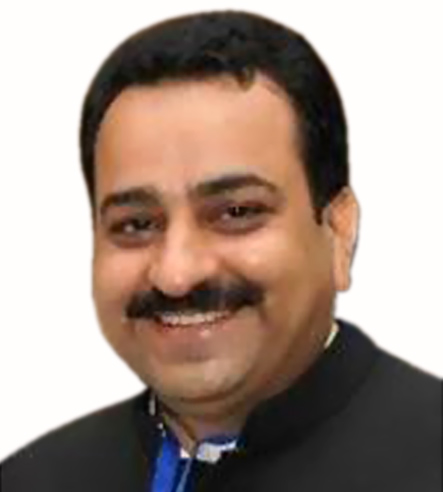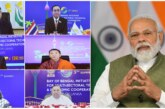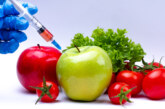

No matter where you live in India, you will always be cautious about drinking water. The first thing you will fix in the house is an aqua purifier, simply because you don’t want to take a chance when it comes to your health. And if you can afford it, why not? The concerns are not unfounded, #drinkingtapwater can give you more than a Delhi belly. In this article, we talk about #tapwater in India, harping more on the capital city, and whether it is safe for drinking. Briefly, we also draw out a contrast between #Europe and #India. We highlight some challenges and draw out some possible solutions and revealing the popular perception of travellers vis-a vis drinking water in India. It is only through examples of others, we can learn and formulate effective policies that can work in our country. We have touched upon multiple solutions, some which are cost effective, some that requires policy changes etc. The solutions are elaborated along with a conclusion.
Bottled up concerns? Now talking of India, a blog which was widely read and appreciated by Christine Kalooa even doubts the bottled water. She called it an exercise in blind faith, elaborately describing open seals and adulteration even there. It is a matter of great concern and challenge for a nation that talks of #development.
The provision of #cleandrinkingwater has been given priority in the Constitution of India, with Article 47 conferring the duty of providing clean drinking water and improving public health standards to the State. The government has initiated many programmes since independence to provide safe drinking water to the #ruralpopulation. According to a report in Water Aid India, “Till the 10th plan, an estimated total of Rs.1,105 billion have been spent on providing safe drinking water. One would argue that the expenditure is huge but it is also true that despite such expenditure lack of safe and secure drinking water continues to be a major hurdle and a #nationaleconomicburden.”
Few facts and figures: The 2001 Census reported that 68.2 per cent of households in India have access to safe drinking water. According to latest estimates, 94 per cent of the rural population and 91 per cent of the people living in urban areas have access to safe drinking water. Data available with the #DepartmentofDrinkingWaterSupply shows that of the 1.42 million rural habitations in the country, 1.27 million are fully covered (FC), 0.13 million are partially covered (PC) and 15,917 are not covered (NC).
Despite the figures not seemingly threatening, what could move you is a data of the people affected. It is estimated that around 37.7 million Indians are affected by waterborne diseases annually, 1.5 million children are estimated to die of diarrhea alone.
A report in the medical journal The Lancet, in 2011 talked about scientists testing water samples from New Delhi and finding more than a dozen species of bacteria, ranging from strains that cause pneumonia to cholera. The bugs had genes that enable them to resist almost all medicines. The report also exposes the irony of an economy that boasts of more mobile phone subscribers than toilets, encouraging and creating more drug-evading bacteria.
Shifting gears: It may be a dream to drink water directly from the tap for many of us in urban areas, but it is still a reality in many parts of Europe. A recent report about drinking water from the tap took me back to my days in UK. The first time I landed in hostel, I was inquiring about the purifier but was told to directly drink water from the tap. For the first few days, it was still a shock, we must admit.
A new info-graphic has revealed the different destinations in Europe where you can and can’t drink tap water. It talks about most of western Europe, from in the north down to Malta in the south, have safe drinking water.
While this exercise is particularly helpful for tourists, even for the other’s it acts as a reminder. Czech Republic is safe for drinking tap water, but you should go for bottled water just over the border in Slovakia. The report can be a huge factor in planning your holiday. In most third world countries, #bottledwater is a must. Drinking unsafe water can give you hepatitis, typhoid and many more.
The new info-graphic on European destinations from city base apartments, based on advice from USA’s Centre for disease control and prevention reveals of places you should be more vigilant about. A #CDCspokesperson told a daily in UK, ” CDC recommendations for drinking water are based on the overall risk of #gastrointestinalillness among travelers to a country. Although municipal water in cities and urban areas may be treated and safe to drink, water quality in rural areas can be less certain. CDC recommendations reflect an abundance of caution, and travelers are encouraged to drink bottled water if any doubt exists.”
The list is detailed guide to your drinking water, starting from Albania to Vatican City. Hungarian and Slovakian government has confirmed of full compliance with the EU’s drinking water directive, hence it is safe drinking water from the tap.
#Possiblesolutions
High quality, safe and sufficient drinking water is essential for our daily life, for drinking and food preparation. These ideally should be the ‘basics’ for a country marching in the 22nd century. Given that we are still struggling to provide the basics, not necessarily because of resources only, but also because of lack of planning—It might help for us to understand the European model for ensuring clean and safe drinking water. We may not be able to replicate the exact model, but we can definitely draw inspiration.
The European Union has a history of over 30 years of drinking water policy. This policy ensures that water intended for human consumption can be consumed safely on a life-long basis, and this represents a high level of health protection. The main pillars of the policy are to:
- Ensure that drinking water quality is controlled through standards based on the latest scientific evidence;
- Secure an efficient and effective monitoring, assessment and enforcement of drinking water quality;
- Provide the consumers with adequate, timely and appropriately information;
- Contribute to the broader EU water and health policy;
There can’t a single solution to a problem as big as this, but we can always engage with multiple ways of reaching a solution.
#Treatedwater?
“When we turn on the tap, we rarely think about where the water comes from or where it goes afterwards,” Bo Jacobsen, #EuropeanEnvironmentAgency (#EEA) water expert, explains the true value of tap water. Treatment of water is a possible way of finding a solution. Recently a #watertreatmentplant was launched in Delhi, they claim to treat sewage to drinking water. Technology has enabled us to treat water for consumption, which is a huge hope.
But for greater reach we need to monitor most treatment plants, and the conditions in which they run. Most large cities in India have centralised water treatment facilities that treat huge volumes of water. To build these, we require huge amount of money, and to maintain it similar amount. Therefore, such centralised systems need to be backed by effective distribution system, so that the water doesn’t get contaminated before consumption. A big reason behind that are also the pipes that distribute it. We need to fix these major areas of concerns.
#Awareness is a big part of the solution
Creating #awareness in rural and urban spaces about contamination can be beneficial. Clean #sanitation and maintaining #hygiene can help us inch closer to our dream. There are various school and college students who volunteer to spread awareness, educate and also collect samples for assessment. They assess the environment around the #watersource, which can be a defining factor for adulteration.
The awareness would also talk about improving the ways in which we collect and store water so as to avoid contamination while collection, storage and use. With the decentralisation of programmes for #watersupply it is essential that communities and institutions like panchayats are actively involved in the planning, #implementation and execution of programmes for water supply.
#Communitywatersystemscanbehelpful
Especially in villages where the pipes have not reached, they can have a central place where the populace can buy water in jerry cans.
Some good news
A recent article in the Hindu late last year brings hope to this overall grim scenario. It talks about tap water in many parts of the Capital fit for drinking. The study was conducted by a consumer rights’ group.
The use of #reverseosmosis (RO) units and other water purifiers is popular in the #NationalCapitalRegion, but according to Consumer Voice, which studied samples from 23 locations, many parts of the city can drink straight from the tap.
About two months ago, samples were taken from #KatwariaSarai, #Bhogal, #VasundharaEnclave, #GaneshNagar, #DilshadGarden, #GoleMarket, #OldRajendraNagar, #PitampuraQUBlock, #MayurVihar, #RKPuram, #SaritaVihar, #Naraina, #Panchsheel, #BasantEnclave, #SaraswatiVihar, #Vikaspuri, #PitampuraMUBlock, #Rohini, #ModelTown and #Dwarka in #Delhi, and two places in #Ghaziabad and one in #Faridabad. The COO of the consumer group was quoted saying he was pleasantly surprised to see some areas with clean tap water fit for drinking. There were voices of agreement by #DJB officers who claim to emphasise on the #drinkingwater without purification.
It is heartening to know that some study believes that few areas do have water fit for drinking. We as consumers can only celebrate this news. What say?
#DrArvindKumarPresidentIndiaWaterFoundation



